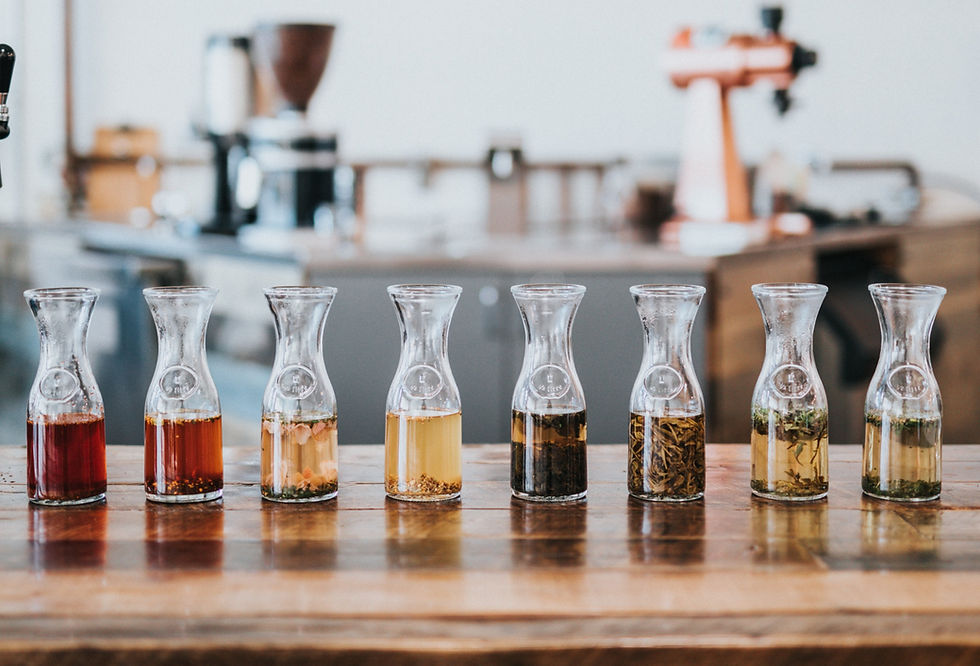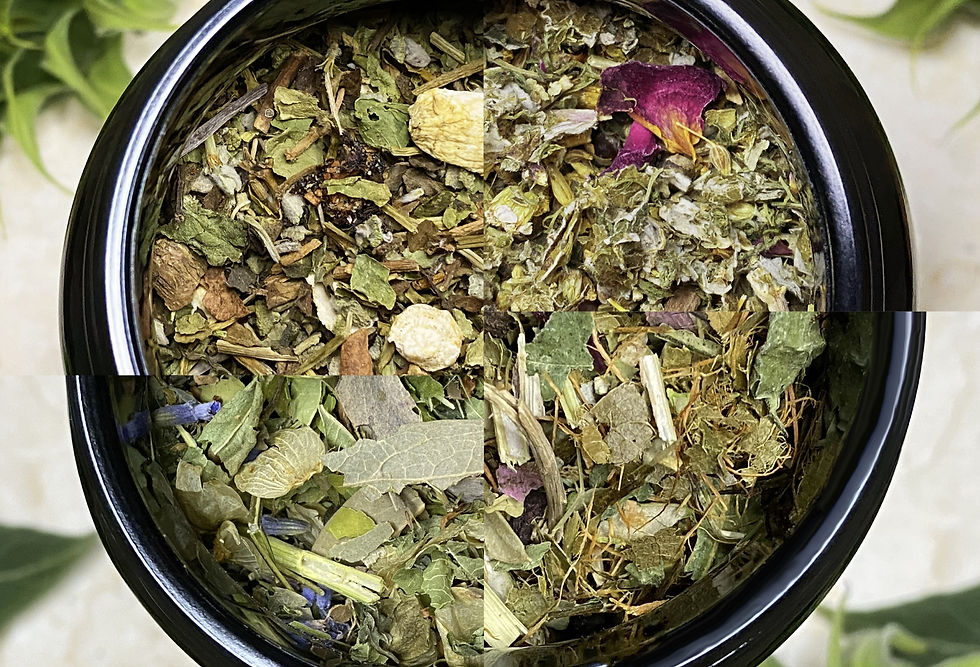Tisanes or herbal infusions can be as easy as your ABC's, all you need is a little knowledge.

WHAT are tisanes?
Tisane is defined as the steeped water of plants not from the Camellia Sinensis variety, which is where black, white, green and oolong tea come from. Tisane is the correct term to use when referring to herbal teas, and there are distinct differences to define a 'true' tea from a tisane (herbal tea).
Tisanes are caffeine-free and can be consumed hot or cold depending on the seasons. They have also been used throughout history by many countries, as far back as BC, for enjoyment and medicinal purposes.
With tisanes, the use of plants does not stop at just the leaves like 'true' tea. The flowers, bark, roots, stems, seeds and fruits are all used to create a variety of infusions for different purposes.
'True' tea is from one plant and tisanes are from many. Combining different plants is key to creating purposeful tisanes where herbs work in synergy with each other to ensure you are getting the full potential of natures gifts.
WHY drink tisanes?
Apart from the beautiful aroma and taste that can be achieved with herbal infusions, tisanes are also filled with countless benefits for your body, mind and soul. The benefits range from stress and anxiety relief, hormone balance and fertility, mood enhancing, immune support, digestion aid, detoxification and cleansing, skin health and acne relief, organ and blood health, and the list goes on. So why do we drink tisanes? Because they do good for us. And anything that does good for us is always a yes please in my books. A healthy mind and body is a happy mind and body.
HOW do we make tisanes and drink them?
Boil the water and pour it over the plants or boil the plants in the water? While it may seem that either technique brings the same results it really isn't the case. There is just a few things that you need to know to ensure that your are getting all the benefits out of the plants that you use without destroying key vitamins, minerals, enzymes and oils if the water is too hot. For example, boiling the plants in the water creates what is called a decoction rather than an infusion.
Decoctions are simmered teas that are perfect for extracting the properties out of hard roots and dried berries, barks and seeds. Basically those with a thick membrane where a constant simmer is needed to penetrate the outer shell. This gives you a much more concentrated infusion and stronger flavour as the longer you simmer the more the water evaporates. Some even simmer until only a syrup remains. Decoctions are simmered for a minimum of one hour.
An infusion on the other hand can be hot or cold. Hot is what we usually associate with a herbal infusion and is the most common process. This is where hot water, usually at boiling point (100C), is poured over plants and let to steep for 10-15 minutes or longer depending on the properties we want to extract. Flowers, leaves and fresh roots (example: ginger) is where this process is ideal, although all herb types can be used. It's important that once the hot water is added into the mixture that a cover is placed on top to trap what we call volatile oils (these oils are what is extracted from a plant to produce essential oils).
Now, a cold infusion is ideal for mucilaginous herbs, herbs that contain essential oils and freshly harvested herbs.
"Mucilaginous herbs derive their properties from the polysaccharides they contain. These polysaccharides have a 'slippery', mild taste and swell in water, producing a gel-like mass that can be used to soothe and protect irritated tissues in the body, such as dry irritated skin and sore or inflamed mucous membranes" - The Naturopathic Herbalist.
Some place their herbs in cheesecloths to aid with extracting the herbs once the infusion is complete but I find that straining the infusion after works just as well; you will however need a very fine sieve to get all the little particles out. It doesn't matter if some particles remain, it is more for the texture in the mouth that you may not want what may feel like 'dirt' in your tisane to remain. I believe that all those little bits are good for me so I drink them down and hardly notice them anymore. To make a cold infusion all the plant parts are submerged in cold water, covered and let to infuse overnight. Strain the next day and consume. Any leftover cold infusion can be placed in the refrigerator and consumed within 5-7 days.
As easy as ABC...
So there we have it, the what, why and how of tisanes (herbal teas).
Our Organic Herbal Tisane Blends are super easy to use. We have combined only the best organic botanicals into purposeful blends that you can see, feel and smell. We have individually measured/weighed and hand blended each tisane to ensure consistent results.


Comments